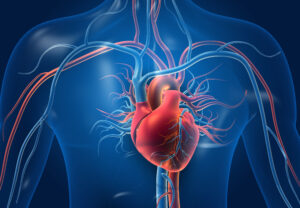 Although the blood is interrelated to Pitta dosha, the circulation itself is connected to Vata dosha, which governs all movement in the body. Poor circulation arises when the vital channels of your circulatory system become obstructed due to issues such as excessive toxins or high Kapha (e.g. fat tissue, high cholesterol), or constricted due to high stress, increased Vata (e.g. anxiety, dryness), inflammation, poor lifestyle habits, and poor dietary choices.
Although the blood is interrelated to Pitta dosha, the circulation itself is connected to Vata dosha, which governs all movement in the body. Poor circulation arises when the vital channels of your circulatory system become obstructed due to issues such as excessive toxins or high Kapha (e.g. fat tissue, high cholesterol), or constricted due to high stress, increased Vata (e.g. anxiety, dryness), inflammation, poor lifestyle habits, and poor dietary choices.
When your circulation becomes constricted or stagnant, many issues can arise, including numbness and tingling, chronic cold hands and feet, hair loss, improper digestion, pain, stiffness, swelling, edema, skin ulcers, nerve damage, tissue damage, and varicose veins. Poor circulation will not just create physical hindrances however, it will have a negative effect on your memory, focus, intellect, and energy levels as well.
Poor circulation can be a serious issue and may be an indicator of a more severe condition occurring. When left untreated, poor circulation can lead to a wide range of complications and should be addressed as soon as the symptoms begin to arise. Here are some of the most common symptoms to look out for.
Signs & Symptoms of Poor Circulation
- Numbness and tingling
- Constant feeling of cold, especially in the hands and feet
- Discoloration of extremities
- Varicose veins
- Swelling, edema
- Cramping in the muscles
- Chronic fatigue
- Poor memory
- Fogginess
- Poor concentration
- Sleepy upon awakening, even after sufficient sleep
- Erectile dysfunction
- Hair loss
- Skin wounds or ulcers that will not heal
- Brittle nails
- Dry, cracking skin on hands and feet
Poor circulation may occur due to a wide variety of causes, and more than likely, multiple causes may be at play. No matter how many or which causes you may suspect, it will be essential to remove these causes to find long-term, permanent relief. Here are some of the most common causes to consider.
Common Causes of Poor Circulation
- Stress
- High Vata (anxiety, dryness, etc)
- High Kapha (overweight, metabolic issues, etc)
- Excessive toxins
- Dehydration
- Diabetes
- Raynaud’s disease (an autoimmune condition)
- High cholesterol
- High blood pressure
- Chronic inflammation
- Obesity
- Sedentary lifestyle
- Lack of exercise
- Improper diet
- Standing or sitting for long periods
- Longterm computer usage
- Constant heavy lifting (e.g. work-related or carrying a baby)
- Smoking
- Pregnancy
- Long-term contraction of muscles (such as clenching from stress or during sleep)
Your circulation is the method by which your tissues and organs receive nutrients and oxygen to keep them nourished and healthy. When your circulation is hindered over a prolonged period of time, it can lead to multiple complications in the affected areas and should be addressed (ideally) at the first onset of the symptoms. The first line of treatment will be to remove the cause(s), while simultaneously applying the recommendations below.
*Please note that poor circulation may be a sign of more severe conditions such as diabetes, high blood pressure, and high cholesterol, which, when untreated, can lead to life-threatening issues such as stroke and heart attack. If you suspect a more severe condition may be involved, please consult with your doctor.
How To Increase Circulation Naturally
1. Reduce Stress Levels
Stress is one of the most common causes when it comes to constricted circulation. Having high levels of stress creates clenching and tightness throughout the body, most of which is unconsciously occurring throughout the day and night. By reducing stress levels and releasing tension, your circulatory channels will begin to open, allowing movement, space, and your lifeforce (Prana) to flow freely. Here are some essential stress-reducing practices to adopt in your daily routine.
- Meditation
- Deep breathing
- Alternate nostril breathing
- Peaceful walks
- Gentle hikes in nature
- Mild exercise
- Gentle Yoga
- Maintain a healthy and consistent schedule
- Make time for self-care practices (abhyanga, baths, etc)
- Make time for hobbies and activities that bring you JOY
- Reduce workload
- Increase rest and relaxation
2. Stretch Daily
Stretching is essential for anyone experiencing poor circulation. By stretching the areas of the body that are being constricted or obstructed, you will release tension and encourage blood flow. Although you may be experiencing circulatory issues on one side of the body, it will be important to stretch both sides to stay balanced and properly aligned.
Take 5 to 15 minutes to stretch out the areas of the body (and its opposite side if applicable), at least once daily. If possible, it is recommended to perform a short stretch upon awakening, midday, and before bed for the most effective results.
3. Avoid Sitting For Long Periods
If your job requires you to sit for long periods, this is likely a major cause of your circulatory issues. There are many risk factors to sitting for 8 hours each day, especially since this is often correlated with being on the computer for long hours as well. If your job consists of sitting at a desk all day, it will be essential to get up and move hourly. Simply taking a lunch break or getting up to use the restroom periodically is not enough. Here are some essential habits to consider if you are prone to sitting all day long.
- Get up every hour to get a drink of water, use the bathroom, or simply shake out your limbs.
- Every 2 to 3 hours, take 5 to 15 minutes to stretch the affected areas (e.g. for wrist or arm issues, stretch the neck, shoulders, arms, wrists, and hands).
- Take a short walk after lunch, even if only for 5 to 10 minutes.
- Use ergonomic practices while sitting by using the proper chair, keyboard, etc, as well as proper alignment in sitting, typing, etc.
4. Perform 10 Sun Salutations
Sun salutations create an instant boost to your blood flow, no matter the cause or area that is being affected. The sun salutation brings movement (and therefore blood flow) to the entire body while simultaneously increasing heat, removing obstruction, and releasing tension.
Each morning upon awakening, perform 10 sun salutations (at your own level and pace). If possible, perform 3 to 10 rounds again midday, after work, and/or before bed.
5. Take a Warm Ginger Bath
The infamous ginger bath is a circulatory essential! Ginger is a specific herb when treating circulation issues due to the warming, stimulating effect that it is known for. Taking a warm bath of any kind is a great way to reduce stress, release tension, remove obstruction, and open the channels of the body.
Take a ginger bath (get recipe here!) before bed, a minimum of three times weekly. Use fairly warm-hot water and soak for at least 15 minutes.
6. Drink Hot Water
Drinking hot water is a simple way to aid in circulation each day. The warmth it produces internally dilates the blood vessels and helps to flush out the system. Since dehydration can also be an issue with poor circulation, this will ensure proper hydration as well.
Drink 16 ounces of hot water on an empty stomach upon awakening. Drink 1 to 2 cups of hot water between each meal throughout the day. If needed, fresh lemon or lime juice can be added.
7. Drink Ginger Tea
Ginger is an essential herb for increasing circulation due to its penetrating and warming properties. By making a strong batch of hot ginger tea and drinking it daily, you will encourage dilation of the blood vessels, while also promoting digestion, metabolism, and detoxification.
Make a strong batch of ginger tea (or any spicy herbal tea) in the morning and drink 1 to 3 cups daily. For severe and chronic issues, this recommendation should be followed daily.
Try our Tulsi Synergy Spice Tea!
8. Perform Daily Oil Massage (Abhyanga)
It is no secret that regular massage will promote energy, warmth, and blood flow while also releasing tension and opening your bodily channels. This can simply be administered by performing a self-oil massage each day or night. Using a warming medicated oil such as our Kapha Massage Oil will enhance the effects even further and produce more noticeable results.
Massage the affected area (and its bilateral counterpart) with a warm medicated oil each day or evening before bed. Spend at least 5 minutes on the affected area, making sure to get all local and distal pressure points involved. For example, for wrist and arm issues, the shoulder and neck should also be massaged. Further, once a week, perform a full-body massage to relieve overall tension and promote healthy circulation throughout your entire system.
Try our warming Kapha Massage Oil!
Read more on the Ayurvedic Oil Massage here.
9. Soak in a Sauna or Steam Room
Similar to a hot bath, saunas and steam rooms are very effective for producing warmth, reducing stress, opening the channels, and promoting healthy circulation. If available, visit your local sauna or steam room and soak for a minimum of 15 minutes, 1 to 3 times (or more!) each week. For more severe issues, this can even be performed on a daily basis until relief is found.
NOTE: Performing the oil massage directly before the soak is a great complement and will enhance both treatments.
10. Take Trikatu Churna
Trikatu is a very heating, stimulating formula that is effective for increasing the circulation, digestion, and metabolism. Taking this formula daily during times of poor circulation can be a great complement to the other recommendations and will help to expedite the results.
Take 1/2 teaspoon of Trikatu Churna in 1 teaspoon of honey three times daily, 30 minutes before each meal. Follow with a few sips of hot water.
NOTE: The blend is very heating and spicy and generally not recommended for Pitta types.
Try our handcrafted, organic Trikatu Churna!
11. Perform Legs Up the Wall
Performing the restorative, inverted yoga posture “legs up the wall” is a great way to promote healthy circulation each night before bed (or any time!). Whether you are standing or sitting for long hours, the blood flow often accumulates and stagnates in your lower extremities by the end of the day. Performing this simple posture nightly will flush the old blood from the feet and legs, allowing new blood flow to emerge after the posture is complete. This posture is great for increasing blood flow to the brain, reducing fatigue, improving memory, and boosting concentration.
Using a pillow for support under your lower back and butt, perform legs up the wall in a reclined position for a minimum of 5 minutes each night before bed. If you are not able to lie on the floor, this posture can be performed in bed. If this is still not accessible, lie in bed and elevate the feet on multiple pillows for 15 minutes or more each night.
Read more about Legs Up the Wall here!
12. Keep Warm
Coldness leads to constricted blood vessels, whereas warmth creates dilation. If you are already experiencing poor circulation, staying warm throughout the day and night will be essential for keeping it at bay and avoiding progression of the issue. So bundle up and make sure that your core, head, neck, and extremities are covered and cozy!
13. Exercise Daily
Daily movement is recommended for every individual, although it becomes even more important when dealing with related healthcare issues. Exercise is a natural way to create instant blood flow throughout the entire body and is guaranteed to awaken circulation, boost energy levels, and increase memory and focus when performed routinely. Whether you are going for a walk or hitting the gym, getting a minimum of 30 minutes of intentional movement (aka exercise) each day will be necessary for healthy blood flow and overall wellness.
Discover the best exercises for your body-type here!
14. Foods For Circulation
Let food be thy medicine! Here are some foods that are beneficial for encouraging circulation. Please remember to favor the foods that are calming for your dosha-type and avoid the ones that are provoking.
- Beets
- Pomegranate
- Garlic (if suitable)
- Onion (if suitable)
- Salmon and salmon roe
- Lean red meat (if suitable)
- Chai seeds, flax seeds, pumpkin seeds, walnuts, and hemp seeds
- Kale, collard greens, and spinach
- Chili peppers (if suitable)
- Cacao
- Citrus fruits
- Green Tea
- Chai tea
15. Herbs For Circulation
There are many herbs that will get your blood pumping. They can be taken in herbal formulas, with honey, made as a tea, or added to food. Here are some of the most powerful herbs for promoting circulation. The best herbs for you will be determined by your dosha type (Prakriti), current state of imbalance (Vikrtti), and any underlying conditions that may be involved in the circulatory issue.
- Ginger
- Turmeric
- Cinnamon
- Black Pepper
- Cayenne Pepper
- Manjishtha
- Guggulu
- Trikatu
- Guduchi
- Boswelia (Frankensense)
- Shilajit
- Amalaki
- Spirulina
- Tulsi
- Turmeric
Additional Tips
- Eat an overall healthy diet according to the season and your dosha type
- Avoid junk food, processed foods, high sugar intake, and high salt intake
- Perform an annual or biannual cleanse to remove obstructions from the system
- Keep the mind and emotions balanced
- Avoid caffeine and alcohol, as these create short-term vasodilation but long-term vasoconstriction
- Qigong and Tai Chi are amazing ways to move blood, lymph, and Chi throughout the body and are highly recommended!
Conclusion
With an endless list of causes, it is no surprise that poor circulation affects so many individuals. The first line of action will be to remove any potential cause while making the appropriate diet and lifestyle changes. Taking the proper herbs will be of great benefit, but only when they are used in combination with the other necessary changes. Poor circulation may arise as a simple discomfort, but it is nonetheless a serious issue that can progress with time, leading to many potential complications. Therefore, treating the circulatory issue (and any other underlying condition) will be extremely important to maintain optimal health, energy, and wellness all around.

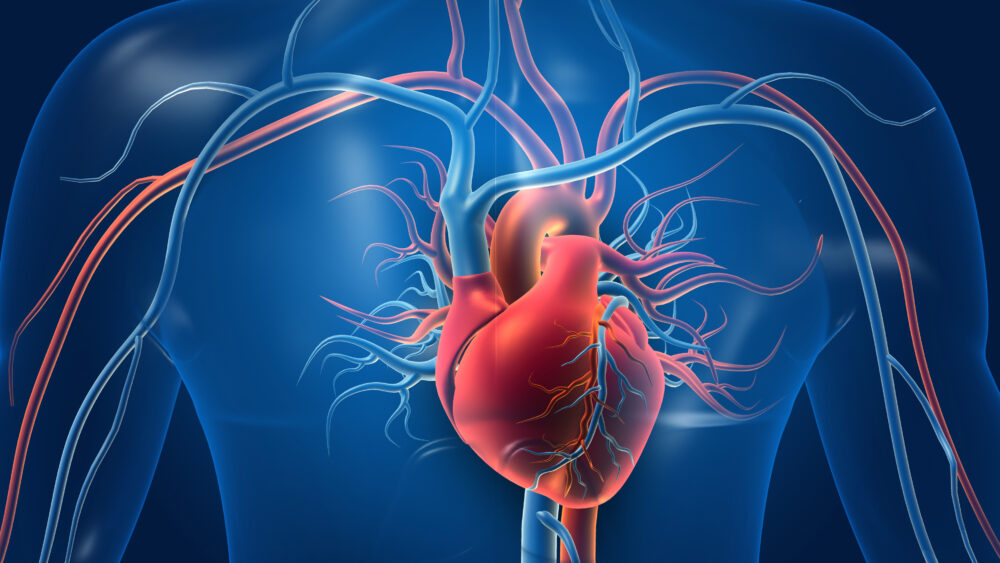
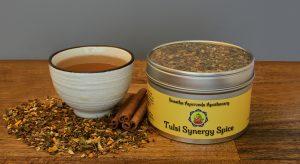
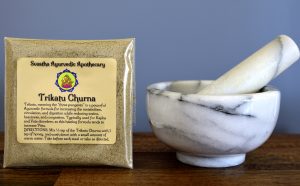
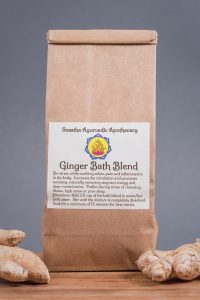

This is excellent. I am pregnant and already tend toward kapha excess imbalance. I will be certain to incorporate more of these things into my daily practice. Thank you much
Hi Issa,
Thank you for writing in! I hope these practices help you keep balance throughout your pregnancy. Please let me know if any questions come up!
Many blessings to you and your baby:)
Namaste,
Danielle
Very informative article,
Thanks for sharing.
Regards
Thank you for writing in, Sachin! I hope you find the information useful. Please let me know if any questions come up!
Be well:)
Namaste,
Danielle
Very useful information. I am going to implement it
Thanks for sharing.
Regards and Namaskar.
Hi Gobind,
Thank you for your kind words! I am glad you are finding the information useful. Feel free to write back if any questions come up!
Be well:)
Namaste,
Danielle